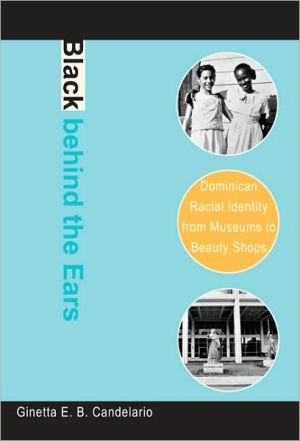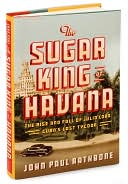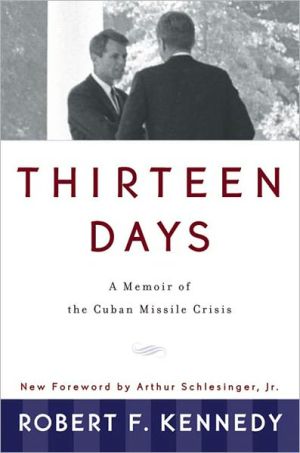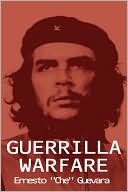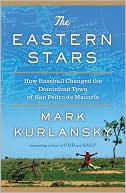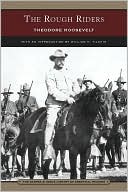Black behind the Ears: Dominican Racial Identity from Museums to Beauty Shops
Black behind the Ears is an innovative historical and ethnographic examination of Dominican identity formation in the Dominican Republic and the United States. For much of the Dominican Republic's history, the national body has been defined as "not black," even as black ancestry has been grudgingly acknowledged. Rejecting simplistic explanations, Ginetta E. B. Candelario suggests that it is not a desire for whiteness that guides Dominican identity discourses and displays. Instead, it is an...
Search in google:
An exploration of Dominican identity formation in the Dominican Republic and the United States. Examines how their definition of race, especially as seen in hair texture, was influenced by U.S. imperialism in the early 19th century through today.
Black behind the Ears\ DOMINICAN RACIAL IDENTITY FROM MUSEUMS TO BEAUTY SHOPS \ \ By Ginetta E.B. Candelario \ DUKE UNIVERSITY PRESS\ Copyright © 2007 Duke University Press\ All right reserved.\ ISBN: 978-0-8223-4018-8 \ \ \ Chapter One\ "It Is Said That Haiti Is Getting Blacker and Blacker" \ TRAVELING NARRATIVES OF DOMINICAN IDENTITY\ In much of Latin America, the official and unofficial policies of the state are played out on the bodies of its citizens, thus becoming the intimate personal experience and shaping the unique vision of the individual that gets expressed in what we recognize as the writer's particular voice.-Amy K. Kaminsky\ On October 12 of every year, the entire country celebrates different cultural, religious, sports, and social events organized by both public and private institutions to commemorate the "Discovery of America," subsequently baptized "The Day of the Race" and today labeled more subtly, but still maliciously, "The Day of Hispanicity."-Dagoberto Tejada Ortíz\ In her important book Imperial Eyes: Travel Writing and Transculturation, Mary Louise Pratt convincingly argues that Spanish American independence movements were of such great interest to the French and British empires that an entirely new literary genre, the travel narrative, was developed to offer information about these new nations to the European metropolis. Acting as "advance scouts for European capital," these writers rewrote and reinvented the Americas in ways that suited the ideological, economic, and political projects of their empires. At the same time, American Creole intellectuals and elites engaged these narratives and offered their own transcultural visions of independent America. That transcultural vision positioned Creoles as legitimately hegemonic in the Americas because they were "Europeanizing" yet American, indigenous yet white, and republican yet patriarchal. Thus, European travel writing offered a narrative against which Creole counter-narratives of national identity and political legitimacy were elaborated.\ In Santo Domingo and later in the Dominican Republic, travel writing played a similar role in the development of a discourse of Dominicanidad generated in dynamic dialogue with foreign interlocutors. However, the foreign narratives and narrators of the republic who inspired a Dominican counter-narrative were not so much European as North American. Moreover, as a people emerging from an island divided between two different colonial powers and, later, two different nations, Dominicans faced a geopolitical context to their identities unique in the Americas. The Dominican Republic came into existence through separation not so much from Spain, as was the case for the other emergent Latin American nation-states, as from French San Domingüe and later Haiti. In addition, the Dominican Republic was seriously considered for U.S. annexation and territorial incorporation in the nineteenth century and was occupied and governed by U.S. Marines twice in the twentieth century. Accordingly, an examination of leading travel accounts of the island's landscape and people offers us insight into the ideological and political contexts in which Dominican identity was being formed, narrated, and displayed. In large measure, that context was defined by a triangle of relations between Haiti, the United States, and the Dominican Republic.\ This chapter will offer a critique of travel narratives about the Dominican Republic and Haiti, paying special attention to the relationship between the travelers' racial projects and Dominican nation-building projects. "A racial project is simultaneously an interpretation, representation, or explanation of racial dynamics, and an effort to reorganize and redistribute resources along particular racial lines." Following Michael Omi's and Howard Winant's helpful conceptualization, I am arguing that travel narratives formed part of an evolving geopolitical racial project that did the "ideological 'work'" of both U.S. imperialism and Dominican nation building through anti-Haitianist discourses. As Rear Admiral Colby M. Chester put it in his address to the National Geographic Society as part of that ideological work, "It [was] said that Haiti [was] getting blacker and blacker" as the Dominican Republic was getting whiter.\ The Birth of a Dominican Nation: The Black Republic and the Whites of the Land\ As the first black republic in the Americas, Haiti posed a great ideological and political challenge to white-supremacist, slaveholding states in the Western Hemisphere. Repeatedly threatened by the French empire and shunned by slaveowning states throughout the Americas, Haitian leaders justified their expansion into the Spanish part of Santo Domingo as beneficial to both parts of the colonially divided island. In 1822, Jean-Pierre Boyer invaded and unified the eastern two-thirds of the island to Haiti's western third. Just weeks prior to Boyer's unification of the island, Santo Domingo had declared itself to be independent of Spain and newly constituted as Haití Español, or Spanish Haiti, under the leadership of José Nuñez de Cáceres, whose original plan to participate in Bolivar's Gran Colombia project was easily reoriented toward Haitian unification. During the twenty-two-year period of unified Haitian rule, many Creoles in the former Spanish part chaffed under Haitian rule, even as others collaborated with the Unification government. Meanwhile many in the impoverished mulatto and black masses supported the Haitian revolutionaries who had ended their enslavement and institutionalized policies intended to prevent black subordination and white supremacy in the future.\ Independence-minded Creoles-most notably, the "Father of the Republic," Juan Pablo Duarte-fashioned a liberal vision of the emergent Dominican nation-state that integrated the "colored" masses while differentiating them from Haitians by extolling their Hispanicity, their allegiance to Catholicism, and their (relative) whiteness. At various moments throughout the nineteenth century and into the first half of the twentieth century, U.S. government agents and North American capitalists colluded with this Dominican elite in presenting the Dominican Republic as the most "Hispanic, Catholic, and white" of (Latin) American nations against the Haitian Other. Expansionists to a one, they saw enormous potential for capitalist investment and military positioning in the Dominican Republic.\ These North American expansionists argued that the Dominican Republic, although superior to Haiti, could only benefit from further infusions of Yankee industriousness, whether in the form of individual colonists, military governance, customs receivership, or, later, tourism and multinational corporations. Thus, despite the country's African heritage, Dominican identity formations negotiated the fraught space between U.S.-dominant notions of white supremacy that defined mixture as degeneration and the geopolitical positioning of Dominicans as "los blancos de la tierra [the whites of the land]" relative to Haitians. However, the end of Spanish colonial rule, coupled with contemporary theories of "ecological contamination" that claimed that the tropics transformed Spanish Creoles into indigenes in the Americas and the rise of indigenist ideologies of national identity throughout the former Spanish colonies, led to Dominicans' embracing racially indigenous monikers even as cultural Hispanicity was being affirmed.\ Rather than calling themselves "black," as the Haitians had, Dominicans would be Indios, or Indians. Frank Moya Pons argues:\ By calling themselves Indians, Dominicans have been able to provisionally resolve the profound drama that filled most their history: that of being a colored nation ruled by a quasi-white elite that did not want to accept the reality of its color and the history of their race. Somehow Dominicans assimilated the romantic discourse of the "indigenista" writers of the 19th century, and found it instrumental in accommodating their racial self-perception to the prejudices of the elite, by accepting their "color" while denying their "race."\ Responding to the unasked question in Moya Pons's provocative "somehow," I will argue here that indigenista discourses and narratives were assimilated in the twentieth century through the work of key socialization institutions such as the national school system, the national museum, the national media, and, more recently, the beauty shop. An important precursor to this indigenista discourse were the travel narratives of Dominicans as "not black" and as "the whites of the land" that were created and circulated by foreign observers and assimilated into nationalist discourses from the late nineteenth century into the twentieth century. These narratives were legitimated through their absorption by Dominican scholars into the national historiography and public history. In particular, nineteenth-century French colonial and North American narratives of the Dominican Republic and its people are used either directly in displays of Dominican history and peoples or in the historiography that forms the background of the exhibits.\ "They Give Great Importance to That Ancestry": Indo-Hispanicity and Whiteness\ Among the first accounts of Santo Domingo to circulate in the Americas is M. L. Moreau de Saint-Méry's A Topographical and Political Description of the Spanish Part of Santo Domingo (1796). Moreau de Saint-Méry was a Martinique-born mulatto Creole. Educated in Paris and subsequently appointed as a lawyer in French San Domingüe, Moreau de Saint-Méry collected and codified French West Indian laws. In the course of his research, he traveled to Santo Domingo, Martinique, Guadeloupe, and St. Lucia. He returned to Paris, became a member of the Musée de Paris, published a six-volume collection of laws from 1784 to 1790, and became an accepted member of the intellectual elite. Moreau de Saint-Méry's fortunes rose and fell with his ardent support for the French Revolution, and he subsequently was forced to immigrate to Philadelphia. There he opened a small bookstore and print shop, from which he published his two-volume travelogue.\ After presenting a brief history of the island from the point at which the French presence became relevant to Santo Domingo's political future (1630-1777, in his estimation), Moreau de Saint-Méry described the island's topography and people. He claimed that the population of the Spanish part when he visited in 1783 was composed of whites, free men and women of color, and slaves. In his estimation, whites outnumbered free people of color, who in turn outnumbered the enslaved. He attributed the large population of free people of color to the liberal manumission policies encoded in Spanish law and to the proclivity of Spanish masters to mate with slave concubines. It was that weakness, he argued, that led free women of color into "infamous commerce," or prostitution. Immediately following his commentary on prostitution, he wrote: "Color prejudice, so powerful in other nations where barriers between whites and freedmen or their descendents have been established hardly exists in the Spanish part. That is why the Spanish laws in the Indies regarding freedmen have absolutely fallen into disuse." Having stated this, he then listed the many legally codified limitations to free men's and women's freedom: proscriptions against participation in certain professions; prohibitions against the use of bodily adornment; barring of intermarriage; and barriers to civil and military employment if "the color of [an individual's] skin still indicates his origin." Still, he asserted that because Spaniards themselves were of mixed racial heritage and because material conditions created a situation in which a slave's "luck will always be analogous to his master's, as a result of which they are more companions than slaves," racial animosity was far more limited in the Spanish part of Santo Domingo than in other slaveholding societies.\ Interestingly, Moreau de Saint-Méry was suspicious of the claims to indigenous ancestry made by residents of the Spanish part of the island. He wrote:\ If we could believe some individuals of the Spanish part, we would have to add to the three classes into which this population is divided a fourth class that would be very interesting due to the long series of misfortunes which it recalls. I refer to certain Creoles (really a small number) who have hair similar to that of the Indians, that is, long, straight, and very black, who claim to be descendants of the primitive natives of the island. They give great importance to that ancestry, although it is denied by the historical facts that prove that that race of men was completely exterminated.\ This paragraph is informative on several levels. First, it is informative as a historical document, because we learn that residents of the Spanish part of Santo Domingo made claims to indigenous ancestry in the 1790s. Thus, subsequent nineteenth-century indigenism had earlier antecedents on which to draw. Second, the Creole colonial-era reference to hair as a bodily sign of indigenous ancestry signals its importance in the construction of racial identity in Santo Domingo and, later, in the Dominican Republic, to which I will return in chapter 4. And finally, the tone of incredulousness-"if we could believe"-indicates that Moreau de Saint-Méry could not, in fact, believe that people in the Spanish part had indigenous ancestry.\ Moreau de Saint-Méry's overall characterization of the Spanish part of the island and its people was strongly influenced by his anti-Spanish colonial politics. Moreau de Saint-Méry spent a fair amount of text describing Spanish women, usually negatively. In his account, they were fat, ugly, poorly coifed, lacking in fashion sense, uninspired cooks, tobacco-chewing, falsely modest, promiscuous, and prolific breeders. Likewise, Spanish men were portrayed as lazy, siesta-loving, syphilitic braggarts who were ill-suited to the proper husbanding that Santo Domingo's land and women require, as both the land's and the women's state of near-abandonment reflected. In short, the entire condition of the Spanish part of Santo Domingo was one of backwardness and decay, thanks to Spanish Creole neglect.\ Accordingly, the emphasis in his analysis of the island's condition was the untapped potential of the Spanish colony. This is unsurprising given that he advocated French dominion over the entire island, which was subsequently secured in 1795 under the Treaty of Basel, when the Spanish crown conceded its first colony in the Americas to France. Though three times as large as the French part, the Spanish part, he claimed, was barely one-tenth as productive. He felt that untapped productivity was due in large measure to Spanish deism, laziness, and misguidedly liberal Creole social and sexual intercourse with slaves and freed people.\ Although it was researched and written from 1783-87, well before the Haitian Revolution (1791-1804) and the 1795 Treaty of Basel, Moreau de Saint-Méry's text was published after these events. Thus, he wrote in his prologue that his narrative was written "in a manner as distant as possible from all that the French Revolution could have produced." That is, as his "six reasons for France to possess the entire island" illustrate, 15 Moreau de Saint-Méry's critique was intended to support French expansionist designs rather than the Haitian Revolution, which was in full swing at the time of his account's publication. Therefore, he had no vested political interest in portraying the population of the Spanish part in anything other than negative terms. Indeed, ideologically and politically, he had a vested interest in portraying that population as inferior to the French in manners and custom.\ Despite Napoleon Bonaparte's best efforts to re-colonize San Domingüe and to circumscribe Toussaint Louverture's growing power on the island-including having him taken to France, where he was jailed and died-however, the revolution successfully ended in establishment of the Republic of Haiti in 1804 by Jean-Jacques Dessalines. Following nearly two decades of shifting balances of power between the country's northern and southern rulers, Jean-Pierre Boyer consolidated national rule in Port au Prince in 1818. Immediately after, he extended that consolidation over the island as a whole, and in a bloodless transfer of power he established Unified Haiti in 1822. Under Boyer's rule, diplomatic and commercial relations began to normalize. As a result, France and Britain each sent agents to the island. Among these, was Charles Mackenzie, Britain's consul-general in Haiti in 1826-27.\ (Continues...)\ \ \ \ \ Excerpted from Black behind the Ears by Ginetta E.B. Candelario Copyright © 2007 by Duke University Press. Excerpted by permission.\ All rights reserved. No part of this excerpt may be reproduced or reprinted without permission in writing from the publisher.\ Excerpts are provided by Dial-A-Book Inc. solely for the personal use of visitors to this web site. \ \
Figures and Tables ixAcknowledgments xiIntroduction. "We Declare That We Are Indians": Dominican Identity Displays and Discourses in Travel Writing, Museums, Beauty Shops, and Bodies 1"It Is Said That Haiti Is Getting Blacker and Blacker": Traveling Narratives of Dominican Identity 35"The Africans Have No [Public] History": The Museo del Hombre Dominicano and Indigenous Displays of Dominican Identity 83"I Could Go the African American Route": Dominicans in the Black Mosaic of Washington, D.C. 129"They Are Taken into Account for Their Opinions": Making Community and Displaying Identity at a Dominican Beauty Shop in New York City 177"Black Women Are Confusing, but the Hair Lets You Know": Perceiving the Boundaries of Dominicanidad 223Conclusion. "Black behind the Ears, and Up Front, Too": Ideological Code Switching and Ambiguity in Dominican Identities 256Notes 265References 297Index 323
\ From the Publisher“Black behind the Ears makes important contributions to our understanding of the Dominican experience. In this book, Ginetta E. B. Candelario shows processes of identity formation among Dominicans in different historical and geographical contexts, and she looks at the nuanced relationship between ethnic and racial identities. In my opinion, this is one of the best books written on the subject of racial, ethnic, and national identity formation in general.”—José Itzigsohn, author of Developing Poverty: The State, Labor Market Regulation, and the Informal Economy in Costa Rica and the Dominican Republic\ “Based on first-rate ethnographic and historical research, Black behind the Ears provides fresh and original insights into the construction and representation of racial identities in the Dominican Republic and the United States. It is the most comprehensive, focused, and balanced treatment to date of Dominican racial and gender ideologies in the United States.”—Jorge Duany, author of The Puerto Rican Nation on the Move: Identities on the Island and in the United States\ “Ginetta E. B. Candelario’s Black behind the Ears argues compellingly that any serious effort to understand Dominican ideas and practices of race in the ancestral homeland as well as in the diaspora requires a large conceptual framework, a triangular geography of knowledge, and a cultural history formed by Dominican nation-building projects, the difficult plight of the Haitian Republic in the midst of a negrophobic world, the impact of U.S. racial thought, and the Latin American glorification of the Hispanic heritage. Candelario’s book remarkably dares to bring apparently disparate discursive sites to interact convincingly and engagingly in her analysis. The author renders facile readings of the Dominican chapter of the black experience in the Americas as exceptional or pathological simply unsustainable. She shows instead that it invites White Americans, African Americans, and other Latinos to revisit long-held assumptions about racial categories, ethnic identity, nationality, and the ideologies behind taking the ‘visible’ for ‘real’ in matters of race.”—Silvio Torres-Saillant, coauthor of The Dominican Americans\ \ \
